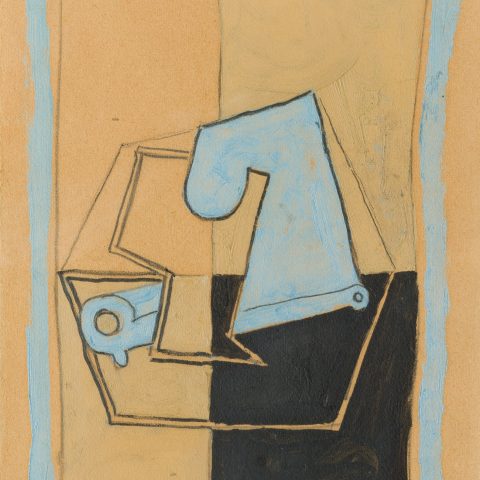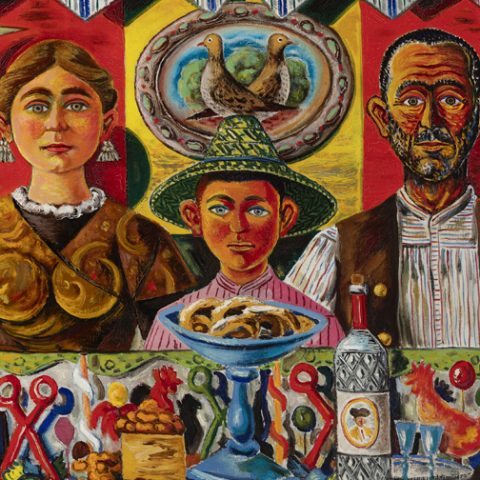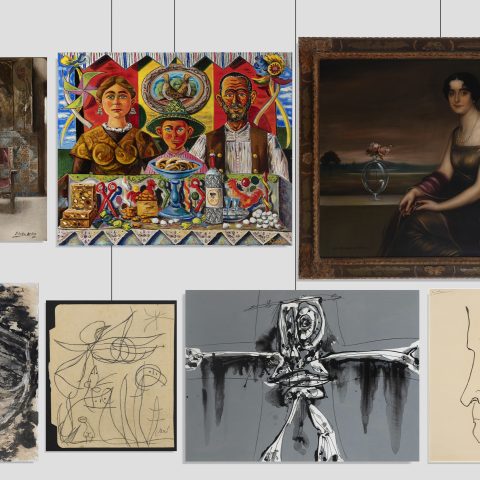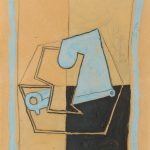Cover image: Willem de Kooning, Untitled, 1965.
When we think of 20th century art, few movements have been as transformative as Abstract Expressionism. Emerging in the 1940s in New York, it not only marked a radical turn in the history of Western art, but also placed the United States at the center of the art world for the first time. Within this movement, one of its pillars was Willem de Kooning, an artist whose work and thought capture like few others the visceral and free essence of this current.
The essence of abstract expressionism: between free gesture and raw emotion
Abstract Expressionism was much more than a technique or a style: it was a radical attitude. The artists linked to this movement -such as Jackson Pollock, Mark Rothko, Franz Kline and Willem de Kooning- broke with the figurative tradition to undertake an unprecedented exploration of the expressive possibilities of gestural painting and its formal freedom.
With them, art became a visceral dance between the soul and the canvas, a deep search to express the ineffable that, like a silent scream, crosses the canvas. In it, shapes and colors cease to be simple visual elements to become raw and pulsating manifestations, full of emotion.
In his free and gestural strokes, the intensity of existence is revealed: the inner struggle, the burning hope, the primal impulse. Each brushstroke defies reason and invites us to embrace the irrational, the instinctive, the essential. In this way, abstraction becomes a universal language in which figures dissolve to give way to an open emotional experience, where the viewer can lose himself, find himself again and, above all, feel. Undoubtedly, the energy that emanates from these works is the best testimony of the constant search to understand the deep, the dark and the sublime that dwells in each one of us.
De Kooning: key exponent of the movement
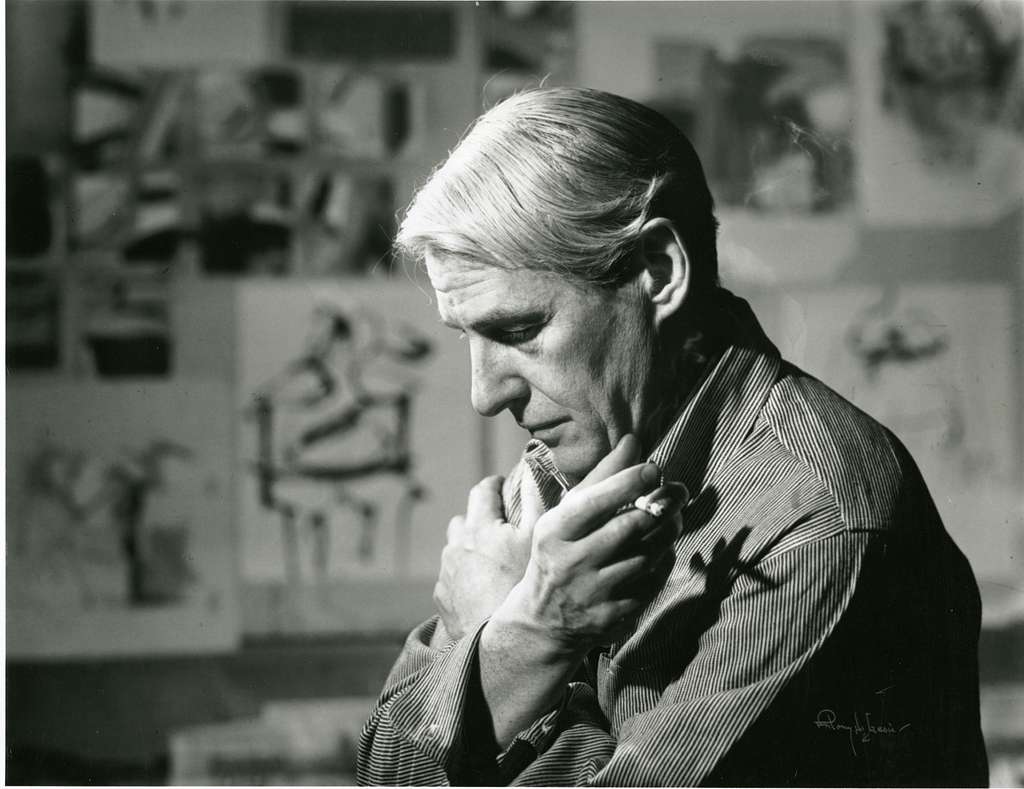
“I’m not interested in ‘abstracting’ or taking things out or reducing painting to design, form, line, and color. I paint this way because I can keep putting more things in it – drama, anger, pain, love, a figure, a horse, my ideas about space. Through your eyes it again becomes an emotion or idea.”
In this emotional and sometimes chaotic terrain, De Kooning found his unmistakable language. The artist, of Dutch origin but deeply influenced by life in New York, was noted for his hybrid approach, embracing abstraction without completely renouncing the human figure. However, works such as the one presented here are a clear example of the utmost importance and significance that De Kooning gave to gesture.
The work, executed in 1965, belongs to a very rich transitional stage in his career, where his visual language evolves notably. Although modest in size, the painting displays great gestural energy and a vibrant use of color, characteristic of his work in the 1960s. By then, de Kooning was already an internationally recognized artist, but his move to East Hampton marked a major shift away from urban chaos and toward a natural environment that influenced his style. His forms became more open, the colors more luminous and the gestures less intense, reflecting the atmosphere of the coastal landscape. The white background acts as a negative space, highlighting the brushstrokes that, although abstract, evoke elements of nature or the human body. The combination of materials such as oil, acrylics and waxes creates a superposition of textures that enrich the work, alternating dense and impastoed areas and other more diluted and transparent ones. A grayish line suggests an internal structure that orders the apparent chaos, connecting with his previous biomorphic compositions. All the elements and characteristics described above make this work a small window into the spirit of his production of the 1960s, anticipating the almost liquid lightness that would characterize his painting in the following decade.
Undoubtedly, and as we can feel in this work, the creative process is as important as the final result, turning each stroke into an emotional act that leaves an honest mark on the canvas, consolidating the idea that art can be an existential experience and not just an object to contemplate. In short, an emotional battlefield where the artist and the viewer are exposed.
Spanish Informalism: A Dialogue with De Kooning
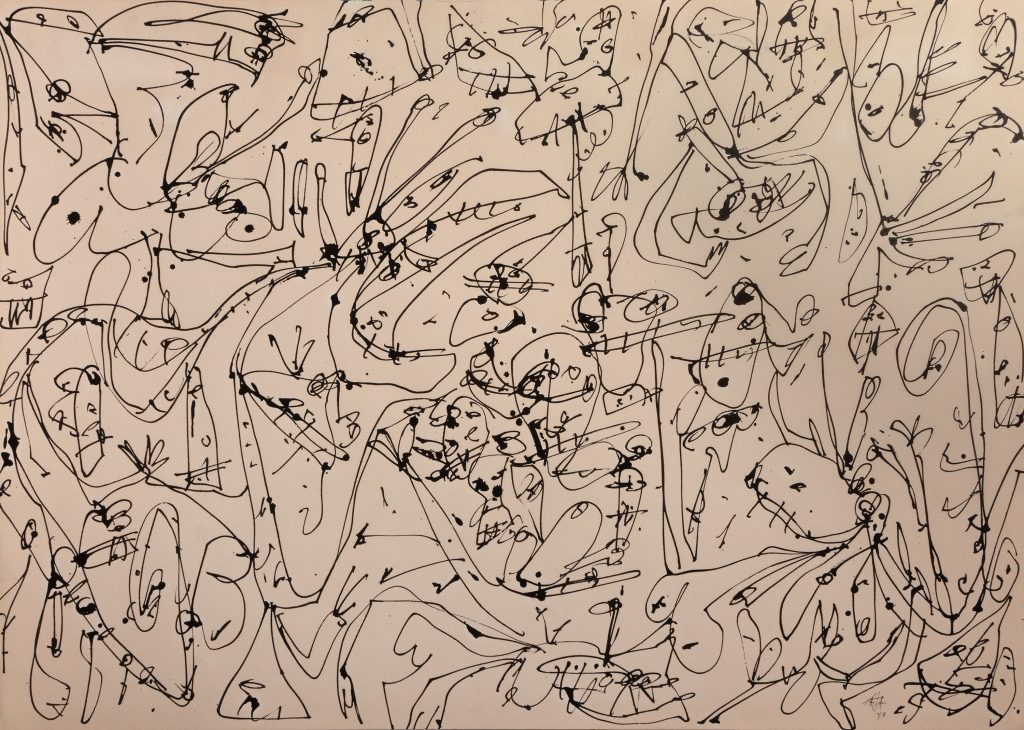
Although Abstract Expressionism was born in the United States, its impact quickly spread to Europe, transforming the conception of painting in the Old Continent. In Spain, during the 1950s and 1960s, a group of young artists began to adopt the gestural freedom and emotional abstraction characteristic of the movement, influenced by figures such as Jackson Pollock, Mark Rothko and, especially, Willem de Kooning. These artists sought, like de Kooning, to capture subjective experience, movement and the inner energy of emotions, something that resonated deeply in a country marked by repression and collective suffering. Despite the cultural isolation imposed by the Franco regime, many Spanish artists explored new languages and styles inspired by the ideas of abstract expressionism. De Kooning, with his emphasis on the energy of gesture, distorted forms and the tension between the figurative and the abstract, became a key reference. In an isolated Spain, painting became a form of emotional resistance, a means of expressing anguish, despair and, at the same time, an inner freedom impossible to manifest in any other way. Thus, artists such as Antonio Saura, Manuel Millares, José Guerrero and Juan Genovés took from abstract expressionism its forms and energy, but adapted them to their own concerns, sometimes transforming gestural violence into a profound reflection on the postwar period and repression.
Do you have works by de Kooning or any abstract expressionist and you are thinking of selling them? At Setdart you can request a free and confidential appraisal and our team of Contemporary Art specialists will contact you.




